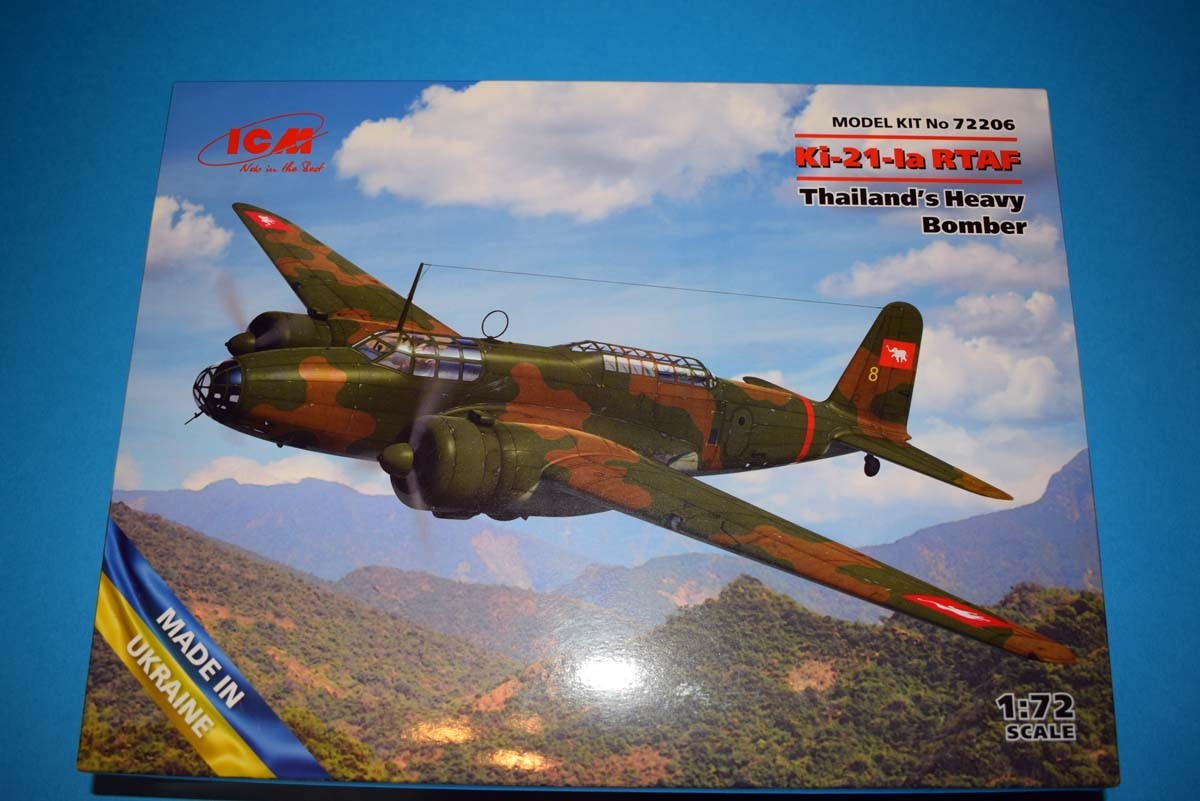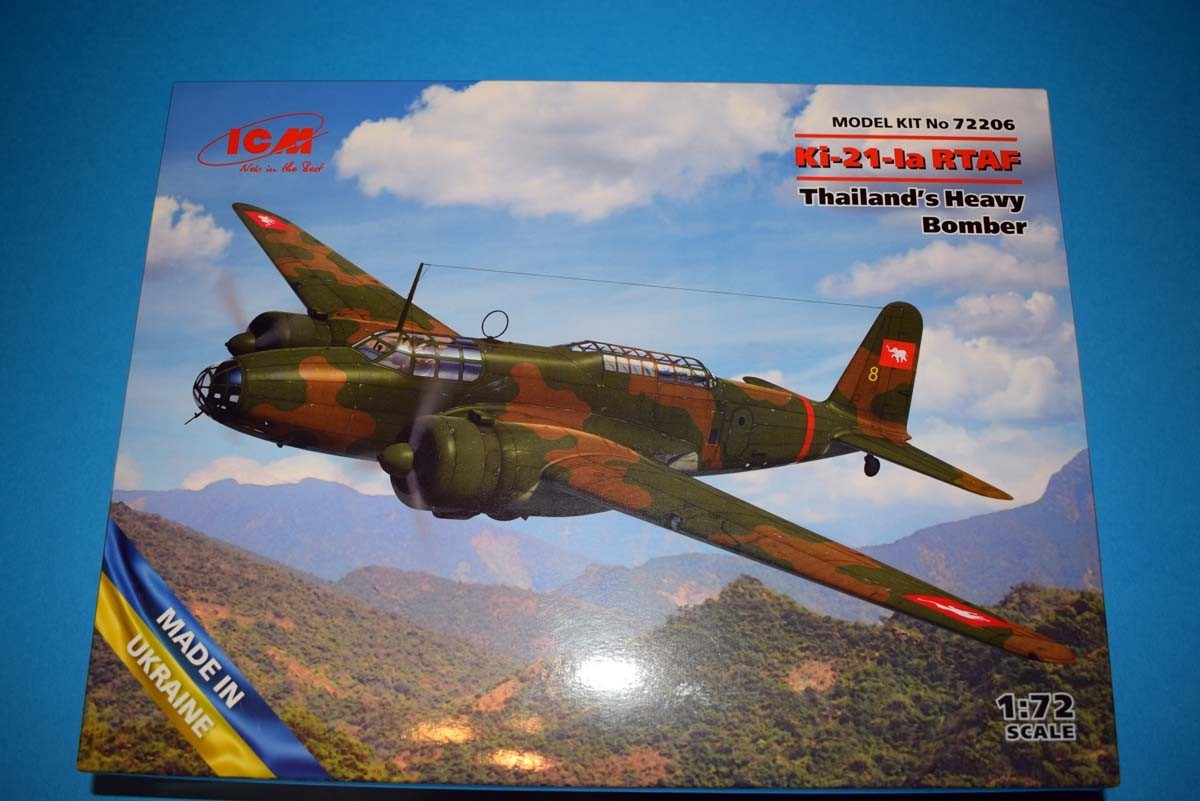
Introduction
The following introduction is as supplied by ICM:
United States and Great Britain. The situation changed with the beginning of the Second World War. After the defeat of France in Europe, Thailand decided to seize the moment and regain its territories in French Indochina. There was made an order for the delivery of new American-made aircraft. However, the US decided that strengthening the Thai Air Force could change the situation in the region in an undesirable direction for them, and refused to supply the aircraft. Thailand referred to Japan, which soon delivered several dozen bombers for the RTAF. Among them were nine Ki-21-Ia aircrafts produced by the Nakajima company, in the spring of 1941, they were included in the composition of Kong Bin Koi 6 (6th Aviation Wing). These aircraft did not have time to take part in combat operations against France but were used in Burma against units of the Chinese National Army in the spring of 1942. After the Chinese forces retreated to their territory, the Thai Ki-21-Ia were deployed for a while to perform patrol and reconnaissance missions. Later they served as training and transport aircraft.
Review
This review from ICM of KI-21-1A RTAF Thailand’s Heavy Bomber in 1/72 scale arrives in a flip top cardboard tray with an additional card lid. Inside the mouldings are in a re-sealable plastic bag which also contains another bag with clear parts. The decals for the release are protected inside the instruction booklet. Examination of the sprues reveals no obvious moulding issues. The gates between the sprue and the moulded parts are not excessive in number but perhaps not as fine as I would have liked to have seen them.
This offering from ICM provides a good level of interior detail, especially for a 1/72 scale offering. As with most releases from ICM, no harness detail is provided but I don’t consider that a major issue in a model of this scale. It does, however mean that anyone looking at the finished model does have interior detail to catch their eye. Finally on the interior, I like that ICM has provided shims for the wing roots so as to continue the interior layout. The defensive armament is particularly well detailed in a model of this scale as even spare ammunition magazines are included as separate mouldings.
The exterior panel lines on all surfaces are of a high standard, but care will need to be taken to avoid flooding them when painting. The flight control surfaces are provided as separate mouldings and so can be set at the preferred angle of the modeller. My one major concern with this release is the attachment of the wings which I feel is very slight and could easily be broken free as it is almost a point to point contact rather than a positive fitment. The undercarriage is again reasonable for the scale, but any modeller that feels the need could further dress it up.
The twin set of piston heads are provided for each engine and the detail that can be seen in the finished kit is of an acceptable level unless you plan to do something where the engine is being worked on. A final very high point for me is that ICM has provided a mask template which on a model with this amount of glazing is a big plus and saves you the cost of going down the aftermarket route.
ICM has provided four finishing options for this model which are as follows,
Kong Bin NOI6 (Sixth Wing) Spring 1941
Foong Bin Thing Rabut 62 (62nd Bomber Squadron) with an additional three options of aircraft between 1942 and 1945.
Number 6, Don Muang Airfield, 1945
Number 9 Don Muang Airfield, 1945
The decals are provided for the instrument clusters with good colourations for all decals, but I can feel the decals on the carrier sheet which may mean they are a little on the thick side.
Conclusion
This release from ICM is surprisingly well detailed for a 1/72 scale release. It also covers an air force that many would never have thought of covering before. But this aircraft that was in service with Thailand’s Air Force has some very colourful decals. My concerns are limited mainly to the connections between the wings and the fuselage and obviously until placed on the model the decals may be on the heavy side. There are plenty of pluses such as the very finely rendered recessed panel lines, the inclusion of a masking template and a surprisingly high level of detail on the aircraft’s interior.

